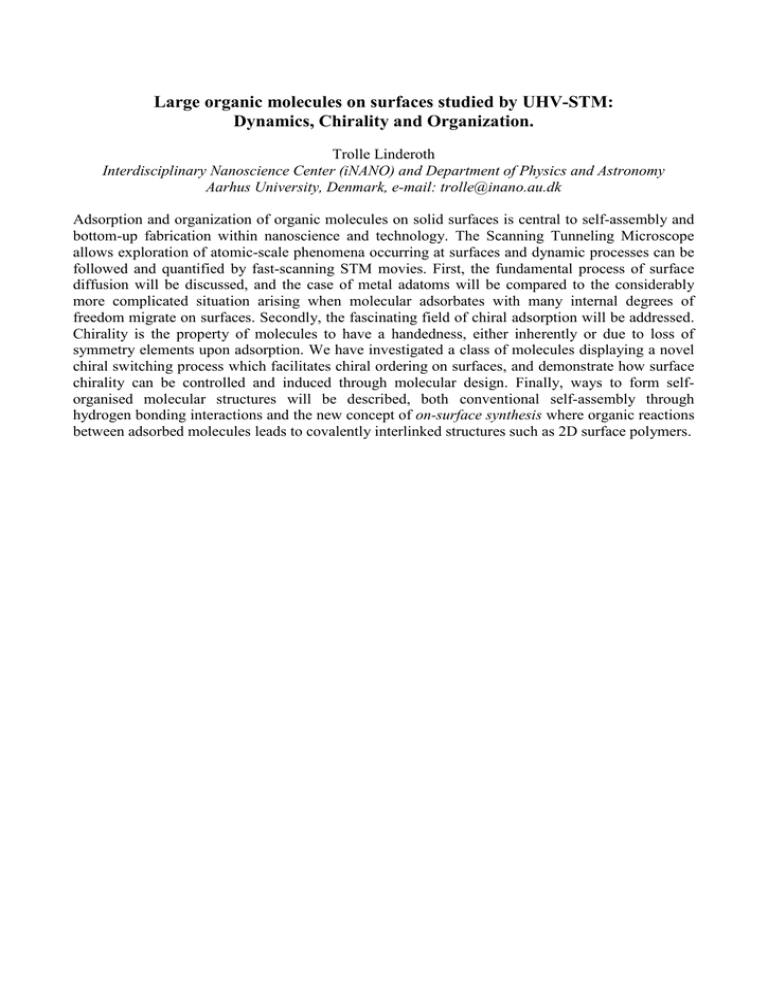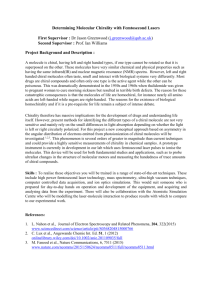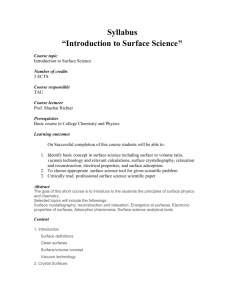Large organic molecules on surfaces studied by UHV-STM:
advertisement

Large organic molecules on surfaces studied by UHV-STM: Dynamics, Chirality and Organization. Trolle Linderoth Interdisciplinary Nanoscience Center (iNANO) and Department of Physics and Astronomy Aarhus University, Denmark, e-mail: trolle@inano.au.dk Adsorption and organization of organic molecules on solid surfaces is central to self-assembly and bottom-up fabrication within nanoscience and technology. The Scanning Tunneling Microscope allows exploration of atomic-scale phenomena occurring at surfaces and dynamic processes can be followed and quantified by fast-scanning STM movies. First, the fundamental process of surface diffusion will be discussed, and the case of metal adatoms will be compared to the considerably more complicated situation arising when molecular adsorbates with many internal degrees of freedom migrate on surfaces. Secondly, the fascinating field of chiral adsorption will be addressed. Chirality is the property of molecules to have a handedness, either inherently or due to loss of symmetry elements upon adsorption. We have investigated a class of molecules displaying a novel chiral switching process which facilitates chiral ordering on surfaces, and demonstrate how surface chirality can be controlled and induced through molecular design. Finally, ways to form selforganised molecular structures will be described, both conventional self-assembly through hydrogen bonding interactions and the new concept of on-surface synthesis where organic reactions between adsorbed molecules leads to covalently interlinked structures such as 2D surface polymers.



